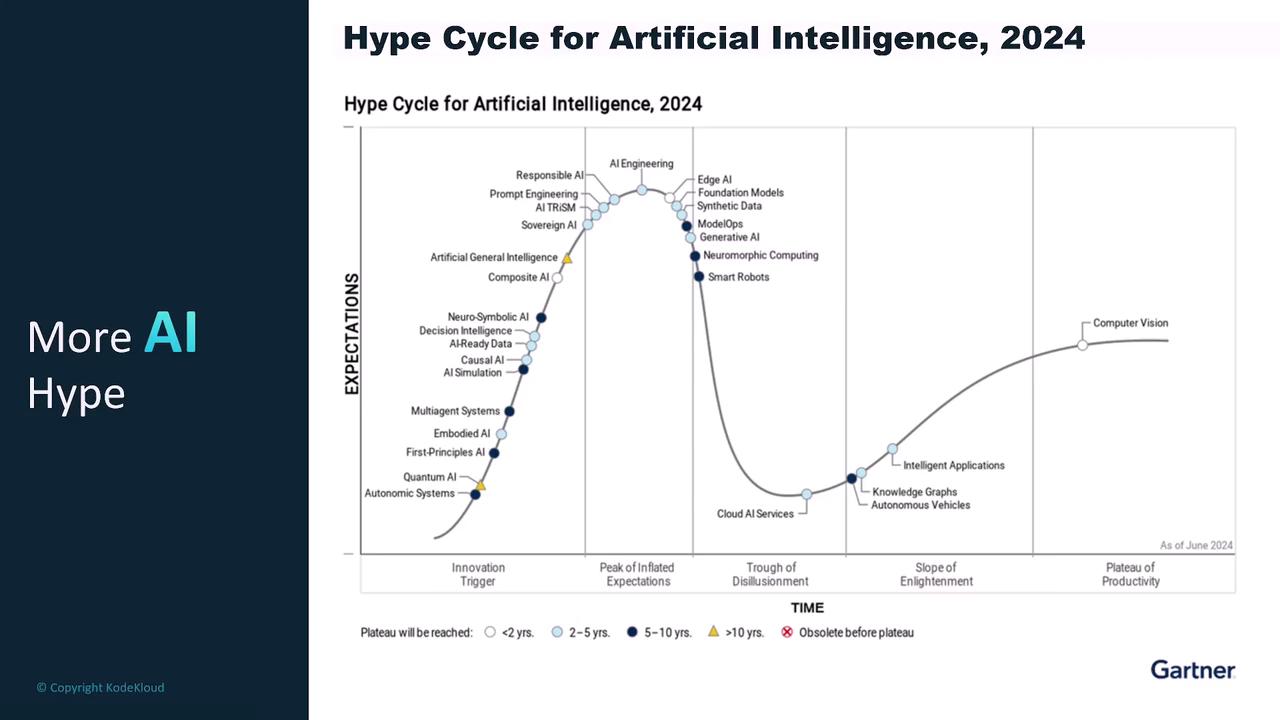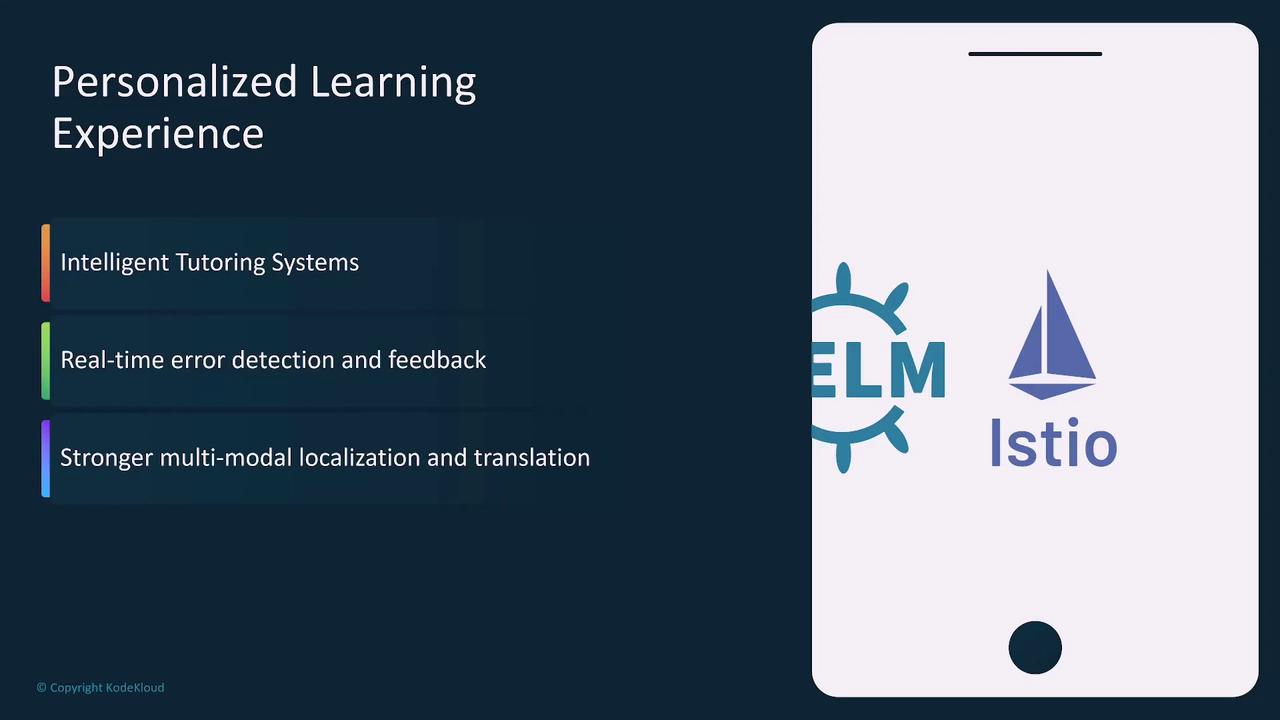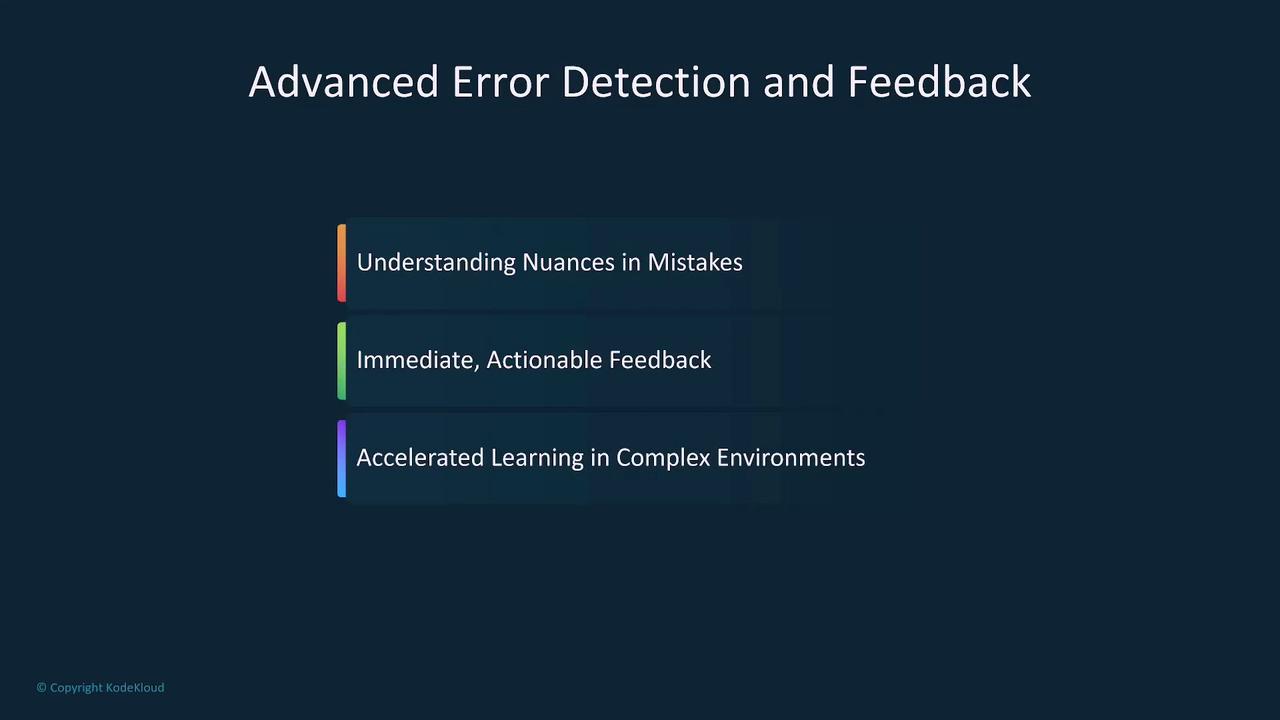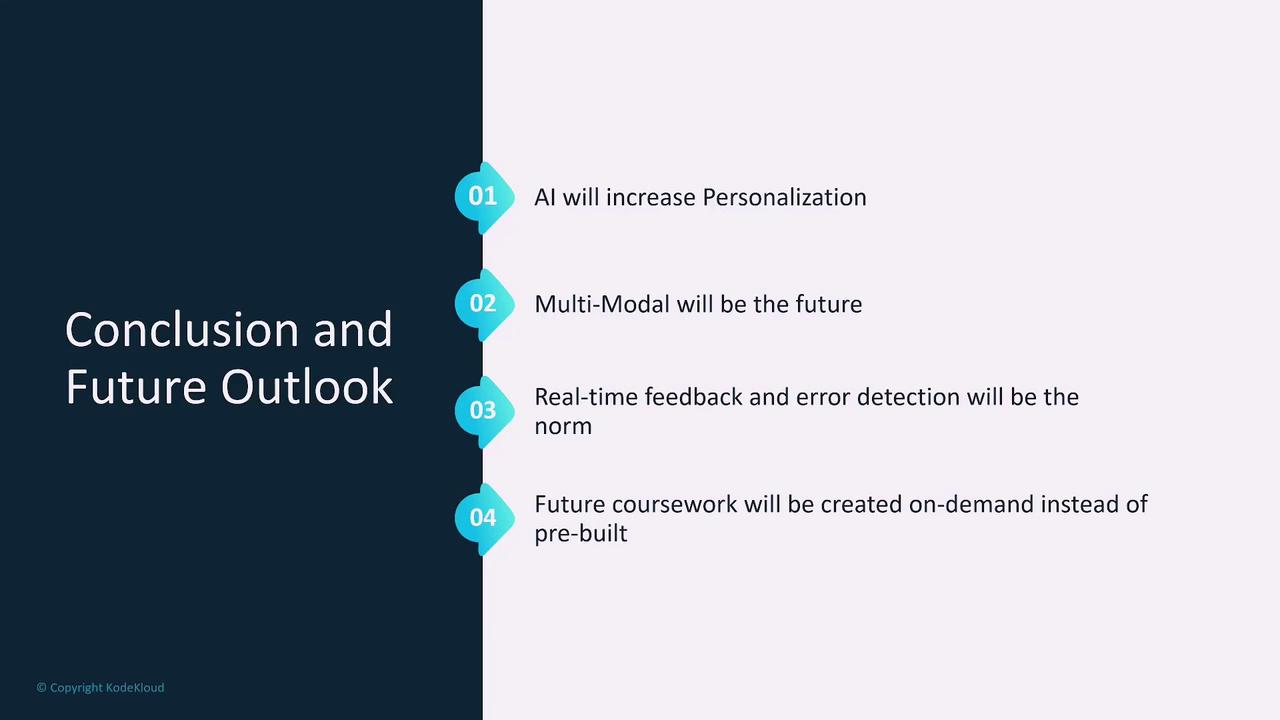AWS Certified AI Practitioner
Conclusion and Next Steps
A Final Word The future impact of AI in AWS and beyond
All right, students.
There's an important question to consider: How will AI affect job roles in IT? Can we truly predict the future? While no one can foresee every detail of what's ahead, a careful analysis of emerging trends can help us prepare for upcoming changes. In this article, we explore why your certification and training are invaluable in an AI-driven world.
The Ubiquity of AI
AI is increasingly present in our daily operations. For instance, as of November 2024, AI is writing 25% of the code at Google. It is transforming how we teach, integrates with numerous third-party services, and reshapes various industries. Despite the excitement, much of the current discussion is driven by AI hype.
Below is Gartner's Hype Cycle for Artificial Intelligence 2024, which illustrates the journey from innovation triggers to realistic productivity benefits:

This progression suggests that while early interest and high expectations are common, many technologies must clear the hype before delivering substantial value. Ultimately, innovations transition from novelty to essential productivity tools.
AI's Impact on Careers
AI is not merely a tool; it is set to enhance and redefine nearly every job role, similar to how cloud engineering emerged over the last two decades. Here are a few key ways AI will influence your career:
- Personalized Learning: Intelligent tutoring systems will offer real-time error detection, comprehensive guidance, and multimodal localization and translation (audio, visual, and video).
- Simulated Mentorship: Learners can expect one-on-one, simulated mentorship experiences where continuous hints and guidance are provided as tasks progress.
- Real-Time Interaction: AI models will interact with users in real time, monitoring on-screen actions and delivering immediate, actionable feedback. For example, during a Kubernetes lab session with KodeKloud, an AI assistant could quickly identify errors and accelerate learning.
The following slide illustrates the potential of personalized learning experiences:

Intelligent Tutoring in Action
With AI-driven systems, learners will enjoy simulated mentorship with continuous, context-aware guidance:

Additionally, AI models will analyze your on-screen actions and inputs, instantly offering feedback to refine your techniques. Consider a Kubernetes lab setting where an AI assistant might immediately point out configuration errors, thereby speeding up your learning process:

Note
The integration of AI in education not only boosts technical skills but also significantly improves accessibility, catering to auditory, visual, and color-blind needs with real-time translation and support.
Embracing the Future
In summary, although we cannot predict every nuance of AI's impact on the job market, the current investment in AI education is preparing you to benefit from these technological advancements. AI will enhance personalization, offer multimodal interactions, and provide real-time error detection and feedback across nearly every tech role.
Below is a final overview of these predictions:

Looking ahead, course materials and skill development will become increasingly on-demand, thereby streamlining and personalizing the learning experience. Every job in tech will be enhanced by the growing presence of AI. Your commitment to learning and adapting now will yield substantial benefits throughout your career.
Final Thoughts
Your certification and ongoing training are key to staying ahead in this rapidly evolving landscape. Keep learning, stay curious, and embrace the future of AI in tech.
Thank you for taking the course. We'll see you in the next one.
Watch Video
Watch video content